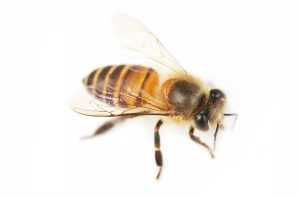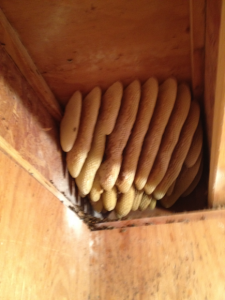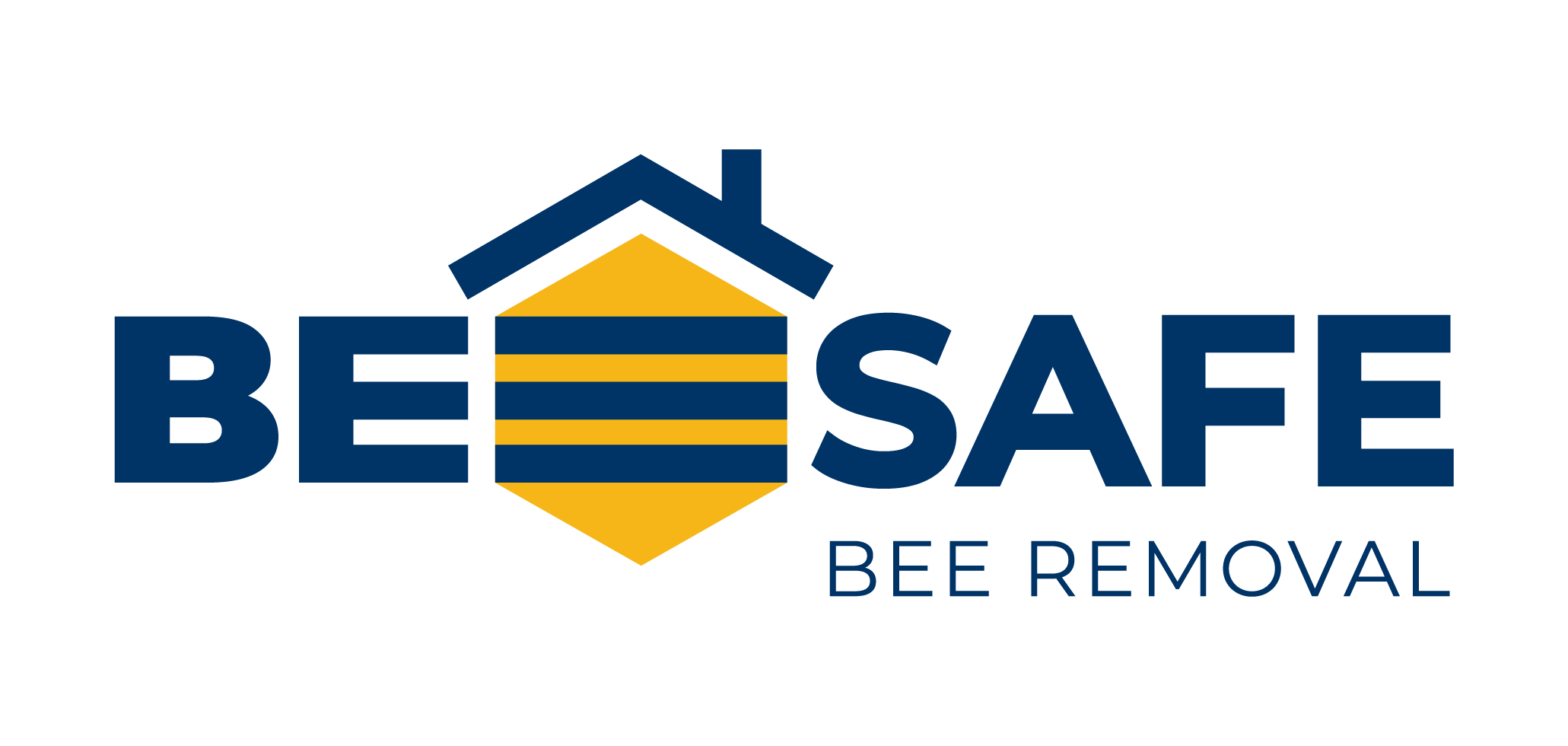Honey Bee Removal
While most people think of a breakfast cereal when the name Honey Bee comes to mind, there really is so much more to the insect than just a cute mascot. Honey Bees provide the world with honey, beeswax, royal jelly, and are also extremely important to the ecosystem. Not only do they create honey but they also pollinate many fruits, nuts, vegetables, and seed crops as well.

What Does a Honey Bee Look Like?
A Honey Bee measures 15 mm long and is light brown and black in color. The rear of the bee is usually oval shaped and has gold brown and black stripes that wrap around it. Some of themh have mainly black bodies, but almost all of them have similar colors and patterns.
The honey bee body consist of:
- Stinger
- Legs
- Antenna
- 3 Segments of the Thorax
- 6 Segments of Abdomen
How are Honey Bees Different Than Other Bees?
Honey Bees are different than other species of bees because their dark and light stripes are used for survival. They do not hide when predators are around, so their colored bodies serve as a warning to would-be predators.
The Honey Bee is a social creature and is very adaptable. These insects forage for food in groups and can survive for months off of their food reserves. Although they generally behave similarly to some of their cousins, certain species are known to be more aggressive when threatened than others.
They are only able to sting once, and when they do, the barb detaches from the bee’s intestines and the bee will die soon after the sting.
Where Do Honey Bees Build Their Hives?

They build their hives on many areas of a property. Most homeowners already know that they like to build waxy hives in the eaves of homes, but other areas that are less thought of include:
- The roof of the House
- Garage Walls
- Walls of House
- Between Floors
- Knot Holes in Trees
- Under Empty Pots
- Under the Floor
- Hollow Cable Boxes
- Tree Branches and Bushes
- Chimneys
- Under Sheds
Do Honey Bees Sting?
Yes, honey bees can sting. Although they are not aggressive all of the time, they do become aggressive when people approach their hive and they feel threatened and can sting people and other animals.
Even though they would die after stinging someone or something, their venom sac keeps pumping venom for up to 12 minutes into its victim. During this period of time, the venom secretes a pheromone that signals other bees to attack the very spot where the sting occurred. For this reason, seek shelter and wash off the area where you got stung.
This is why we suggest avoiding any attempt at DIY bee hive removal, and instead, calling your local bee removal professional to safely remove the hive in and relocate them to an apiary.
What to do if you are stung by a bee:
- Remove the stinger as soon as possible
- Wash the sting areas with soap and water
- Apply a cold compress to soothe the affected area.
- Take painkillers is needed.
- Seek medical attention if swelling or difficulty in breathing worsens.
How to Remove Honey Bees
If you have a swarm or beehive on your property, do not try to kill the bees yourself. There are many reasons not to kill them:
- Attempting to Do It Yourself bee removal can be dangerous
- They play a vital role in maintaining our environment
- There are many bee removal specialists who can help
If you are looking to remove honey bees from your property, call a professional bee removal company, like Bee Safe Bee Removal. We will safely remove beehives and bee swarms from your property and transport them to a local Beekeeper. We also love to share the honey with each and every customer. Not all honey is created equal. Our network of Texas beekeepers are located across every major Texas city. They ensure that honey bees are kept away from populated areas and produce honey for the community.









